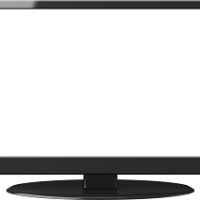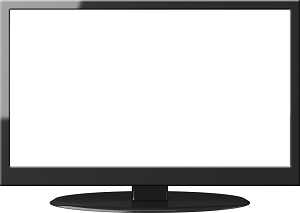 Monitors are a tricky bit and with a controversial history in their making. From serial to Thunderbolt interfaces and from CRT to IPS LED, there is a lot of ground to cover when making the decision of replacing or adding a monitor to your rig. Read on for some tips on how to pick the diamond in the rough.
Monitors are a tricky bit and with a controversial history in their making. From serial to Thunderbolt interfaces and from CRT to IPS LED, there is a lot of ground to cover when making the decision of replacing or adding a monitor to your rig. Read on for some tips on how to pick the diamond in the rough.
If you already know the basics are looking for a few recommended choices, read our post about:
Best CAD Monitors for Various Budgets
Interfaces
The interface is the plug at the end of the wire that actually fits into your computer. One half of the interface is located on the motherboard, the other on your device. The oldest and most commonly used interface is the serial port with three rows of 5 pins. The VGA port for this kind of monitor will be available by default on the motherboard and any old or new monitor with the port will produce the display. If buying second-hand monitors, make sure their pins are present and straight. Brush your fingertip with moderate pressure to check for loose pins.
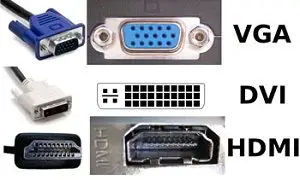 Just after serial interfaces, Digital Visual Interfaces or DVI hit the market. With 5 standardized configurations in the same specification, the DVI allowed a lot of diversity in display technology and media interfacing. DVI-I (Dual Link) is the most famous out of the five because it combines the digital and analog option as well as offering dual link.
Just after serial interfaces, Digital Visual Interfaces or DVI hit the market. With 5 standardized configurations in the same specification, the DVI allowed a lot of diversity in display technology and media interfacing. DVI-I (Dual Link) is the most famous out of the five because it combines the digital and analog option as well as offering dual link.
Next in line would be the High Definition Media Interface or HDMI, which fuses together a combination of media as opposed to just video. HDMI allows you to send audio as well as the video through the same cable along a separate channel available for meta-information or other data. As the name suggests it provides video quality of up to 1080p, advanced and enhanced versions of the technology available in the market can play 4K videos with relative ease.
Apart from the more famous types in the commercial arena, Apple has been tinkering with the USB interface. Google and Apple have both come out with USB C type interfaced products but Apple is going further ahead with its Thunderbolt technology, allowing the USB C-like interface a huge advantage over the rest.
Technology
Cathode Ray Tubes (CRT)
CRT monitors were the first kind of monitors to be introduced to the general public. They were serial interfaced and were TV like because of the extruding back, which hosted the Tube inside. This combination of CRT and serial provided the basic display functionality. These come in small sizes relative to the current products in the market, and can only be found with serial VGA interfaces.
Liquid Crystal Displays (LCD)
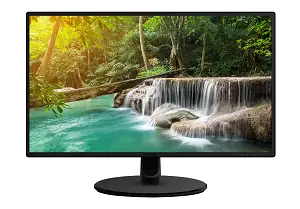 LCDs introduced the flat screen concept to the commercial market. LCDs can be identified by a slight press on the screen. The plastic-like screen bends and colors distort at the point of pressure. These are really thin screens without a glass display thereby reducing weight, which is why these are laptop-friendly. LCDs can be found in sizes starting from 13” ranging up to 40”. Interface options include many options.
LCDs introduced the flat screen concept to the commercial market. LCDs can be identified by a slight press on the screen. The plastic-like screen bends and colors distort at the point of pressure. These are really thin screens without a glass display thereby reducing weight, which is why these are laptop-friendly. LCDs can be found in sizes starting from 13” ranging up to 40”. Interface options include many options.
Light Emitting Diodes (LED) Displays
LED displays were the next step after LCDs and offer a larger range of function and aesthetic possibilities. LED displays have smaller LEDs powering the display’s pixels and can display resolutions of extremely high qualities. Because of the light-emitting nature of the diodes, the display and contrast functions available were absent in previous technologies. Like LCDs, LEDs come in a variety of sizes and interface options, but with a slightly higher price tag.
If you had enough with the details and want to know what we recommend, read our post about:
Best CAD Monitors for Various Budgets
2D Displays vs. 3D Displays
2D displays show you everything in 2D, where the optical illusions, exploits, and mind-eye coordination infer the 2D image in terms of depth and perceive the 3 dimension reality. Including the CRT, LCD and LED mentioned above, the following are other 2D display technologies, either concepts or just less popular.
- Electroluminescent display (ELD)
- Electronic paper, E-Ink
- Plasma display panel (PDP)
- High-Performance Addressing display (HPA)
- Thin-film transistor display (TFT)
- Organic light-emitting diode display (OLED)
- Surface-conduction electron-emitter display (SED) – (experimental)
- Field emission display (FED) – (experimental)
- Laser TV (forthcoming)
- Carbon nanotubes – (experimental)
- Quantum dot display – (experimental)
- Interferometric modulator display (IMOD)
- Digital Micro Shutter display (DMS)
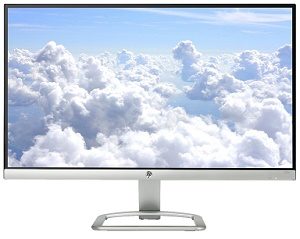 Amongst the 3D displaying realm, holograms are the most popular thanks to science fiction and Hollywood. But the following lesser known technologies are sure to be the new thing of the future:
Amongst the 3D displaying realm, holograms are the most popular thanks to science fiction and Hollywood. But the following lesser known technologies are sure to be the new thing of the future:
- Swept-volume display
- Varifocal mirror display
- Emissive volume display
- Laser display
- Light field displays
Viewing Modes
Portrait and Landscape are more than just orientations and have a considerable influence when setting up multiple displays or special monitors such as kiosk displays. Even nowadays, people use portrait mode monitors as single display units for example portrait photographers who digitally master their shoots. For more detail on how to setup multiple displays, check out our comments here, in this article.
Checking Display Units
The display is the most important part of the package and while the technology will come and go, the display is either eligible or it isn’t. For second hand or refurbished users, look for dark spots or “burns” which are basically dead pixels. Clear and solid color backgrounds will help find them, which will also be the case when you want to check for color consistency. That will most probably appear somewhere around the ends or edges of the screen but either way is unwelcome. Fast moving colors, playing videos and animations will be a good benchmark for how well your displays back-end technology can adapt after however long the previous owner had it.
Other than benchmarking the functions, videos or animations can be used to check the output while the device is set to its extreme settings. For example, when the serial cable has a complete set of pins, pins that look ok can be loose from their position meaning a slight bend in the wire can render your colors inverted. Playing 1080p videos with audio on HDMI and HDT interfaces can be a good test of whether the interface and the underlying hardware are still up to the mark.
Conclusion
All monitors can be a gamble when buying because second hand or not, no technology is stagnant enough for something new to not popup overnight. Coupled with the fact that the display unit is always as essential to a PC user as much as the PC itself, choosing a monitor can be a pressuring task. With this guide, we hope you’ll find some of the general understanding that comes in handy when going window or actual shopping.
If you’re ready to order, read our post about:

